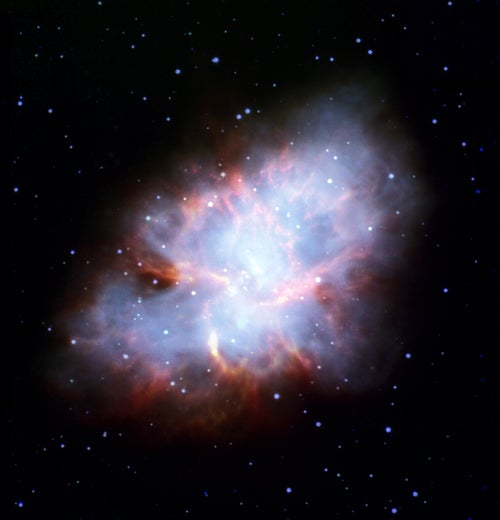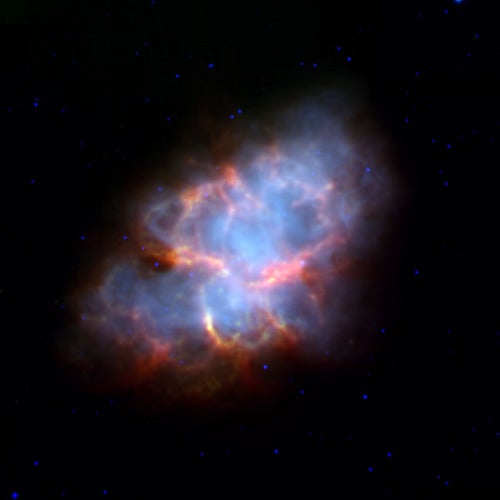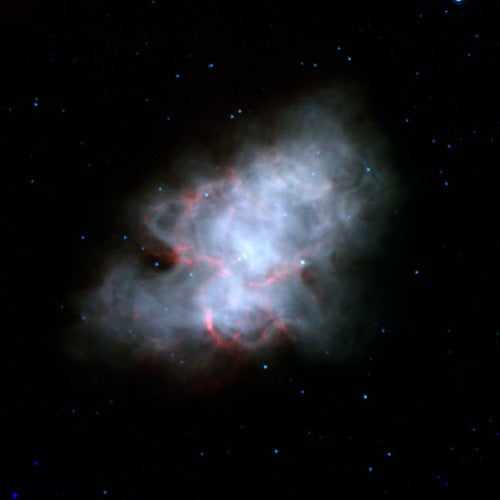“This is a real surprise,” says Tea Temim, the University of Minnesota graduate student who led the study. She presented the images June 1 at the American Astronomical Society’s summer meeting in Minneapolis. “The images are exciting because we’re filling in the puzzle with infrared,” she says. “Infrared is where we can find out about dust formation.”
“We know dust forms in supernovae,” says Robert Gehrz, Temim’s adviser and a collaborator on the study. “SN 1987A in the Large Magellanic Cloud formed dust about 600 days after the explosion.” But estimates of the amount of dust it produced range over a factor of 10,000, and Gehrz notes recent studies suggest lower estimates may be more accurate.
Elements like carbon, for example, should be among the first to condense and clump together. “Theoretically, we expect as much as a solar mass of dust to form, but when we look with infrared instruments, we see very little,” Gehrz tells Astronomy.
It’s difficult to distinguish newly formed dust in recent supernovae from dust produced by the star before it erupted. Here, too, the Crab Nebula seems cleaner than expected. The new images show no circumstellar halo of dust shed from the Crab’s progenitor.
So, where did this smoke-size dust go? “I think shockwaves from the explosion may have destroyed it,” explains Gehrz.












